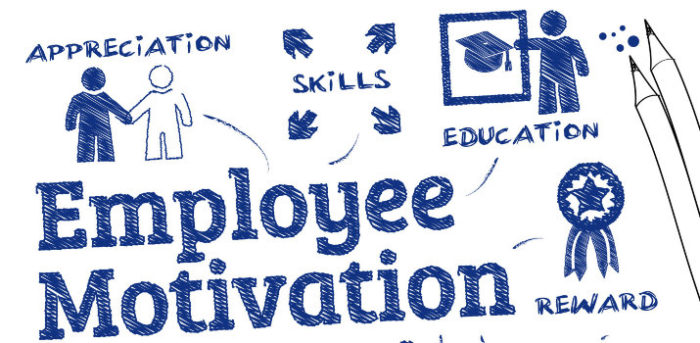Organizations use a variety of recruitment sources to attract applicants like direct applications, employee referrals, newspaper advertising, employment agencies, and executive search firms. Recruiting the right person to the right position is of crucial importance to the performance of every company. At the same time recruitments are expensive, difficult and time-consuming. Web based recruitment tools can be used to publish job postings, administrate applications, including spontaneous applications, and build up a CV Database. This recruitment strategy includes identification of the right channels with a campaign that effectively summarizes the job requirements, company and community. A simple job posting in a publication or online career center is no longer enough — the employer also needs to market itself as a place the candidate would want to work and its community as a place the candidate would want to live. Companies often adopt online systems because they believe e-recruitment is more likely Continue reading
HRM Functions
The Art of Managing Human Resources in an Organization
Organizations and corporations are multifaceted. Such complexity within a business necessitates the need to strategic approach to the management of the employees, whose task is to enable the business to achieve its objectives. Human capital is an imperative asset of an organization and proper use of a potent assent can construct a successful and resourceful organization. In an organization, human capital can make or break an objective or a strategy. The human resource department is the most important department of an organization. Almost all activities directed at attracting, developing, and maintaining effective workforce are implemented in this department. The functions of human resource management are, but are not limited to, hiring the right candidates, at the right time, and at the right price. It also involves training the existing employees, motivating them to give the best to the organization, resolving conflicts, discipline the employees who violate the organization’s rules and Continue reading
Manager’s Role in Employee Motivation
Motivation is the driving force in which human being achieve their goals. Motivation is the power that strengthens behavior, gives the route to the behavior and it triggers the tendency to continue. Motivation is a course that is concerned with a kind of strength that boosts the performance and directs one towards accomplishing some definite target. Motivation is a force that helps individual to achieve their desires. It is a strength that helps individual to stay focus and determined. Motivation usually formulates an organization more successfully because the provoked employees are constantly looking for the improved practices to do the work. It is therefore important for organization to persuade employee’s motivation. One key factor in employee motivation is the opportunity that the employees want to continue to develop and grow the job and career enhancing skills. Managers are individuals that are responsible for heading organizations. Managers are also accountable for Continue reading
Compensation Strategies for Different Workforce Generations
Employees are the most valuable assets of any organization. The main purpose of human resource management (HRM) is to manage the development and performance of people employed in an organization. Some of the important tasks of HRM include attracting and retaining employees with the right skills and abilities, match people to the right positions within an organization and to align employee’s goals and objectives with that of the organizations. All these key tasks are directly or indirectly affected by compensation and benefits plan which the human resource management decides. Compensation and benefits redefines value and success in any workplace. An efficient compensation and benefits strategy is seen as an opportunity by organisations to differentiate them-self from their competitors, who may otherwise take away talented workforce. Hence, organisations need to know the evolving needs of the working population to make sure they offer the most competitive package. Compensation is a major Continue reading
Talent Management Best Practices
The creation of a talent management environment in the 21st century is an important and necessary part of any modern organisations agenda. A shortage of talent, facing an ageing population and a dynamic business environment has all fueled a commitment to a need to focus upon how talent can be attracted and retained within the organisation. To standstill and to be static is a dangerous game and thus firms have to be focused upon adaptability to trigger a sustainable approach through talent. To build a strong, consistent and sustainable talented workforce requires a need to develop employees who can act in the global business environment. 7 Talent Management Best Practices Align Goals and Track Everyone’s Progress: Make sure that every employee’s goals are aligned with organizational goals and also regularly monitor progress on goals so that corrective actions can be taken as required. Finally there is need to be able Continue reading
Tips for Effective Employee Recognition and Reward Programs
Recognition is defined as a form of sincere praise or appreciation given to an individual by another and reward as the earned item of value presented to an individual for successful accomplishment of a particular service, task or mission. Recognition and reward programs has always been an effective strategy for retaining employees and it normally do not cost much and not very time-consuming. Informal recognition and reward program can recognize outstanding performance rather quickly while formal program develops the performance growth in a long term basis. Well planned recognition and reward programs builds comradeship within the team and makes employees feel valued and appreciated. Employees want to feel appreciated and seldom will they find compliments a surplus. Effective recognition and reward programs recognizes and appreciates the efforts of individuals while taking into account their individual needs, differences and personalities. As a leader, do not assume that the approach of one-size-fits-all Continue reading
